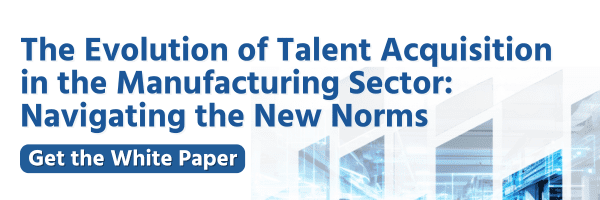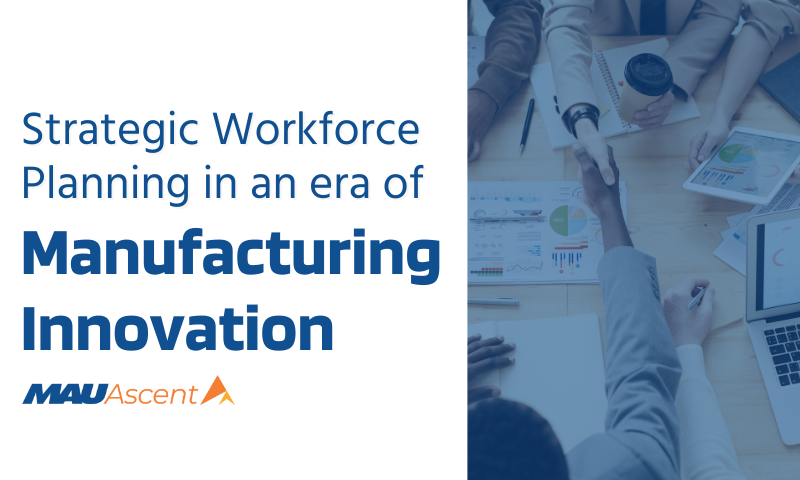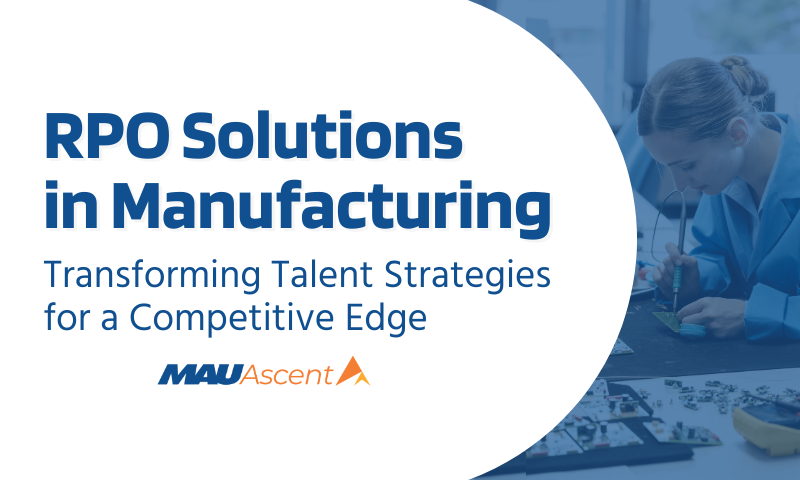The foundation of any manufacturing powerhouse isn’t just its state-of-the-art facilities, cutting-edge technology, or well-oiled supply chain. It’s the skilled workforce at the core of everything it does. In an age where technological advancements are not just a luxury but a necessity to remain competitive, strategic workforce planning is critical to long-term, sustainable success.
The manufacturing sector, traditionally dependent on manual labor, is now being reshaped by automation, analytics, and cutting-edge robotics. This evolution in the industry is not only altering production lines but also redesigning job descriptions, creating new roles, and demanding an entirely different set of skills. This shift calls for planning that integrates human resources with business strategy; a transition that’s delicate, demanding, and, above all, necessary to secure a thriving future for any manufacturing enterprise.
In this blog post, we’ll dissect the crucial nature of strategic workforce planning in the manufacturing sector and arm you with the insights to align your talent framework with the technology that drives the industry forward.
The Art of Anticipating Change in Workforce Dynamics
Before any manufacturing business can map out a strategic workforce plan, it must adopt a proactive mindset, one that anticipates change rather than reacts to it. But what are the changes on the horizon for this industry?
Automation, machine learning, the Internet of Things (IoT), and advanced robotics are not casting a shadow over the human workforce; they’re illuminating a new path forward. For instance, the rise of cobots – collaborative robots – is revolutionizing the shop floor, not by replacing workers outright, but by working alongside them, augmenting their capabilities and boosting production efficiency. The goal of strategic workforce planning is not to stem this tide but to ride it, harnessing technology to elevate human potential.
“Agility is fundamentally led not by technology but by the adaptability, innovation, and collaboration of people.” -Doug Duncan, President of Manufacturing and Supply Chain
In the manufacturing industry, where the life cycle of products can be long and the market demand is volatile, agile planning that incorporates technological developments is essential. The conversation around workforce planning must shift from a defensive, “how do we protect jobs?” to an offensive, “how do we optimize capabilities?”
The Core Components of Strategic Workforce Planning
Strategic workforce planning is more than a conceptual framework – it’s a structured approach grounded in practical insight. It comprises key components, each pivotal to forecasting talent needs and creating a sustainable, versatile workforce.
Analyze and Anticipate Workforce Trends
Understanding current and projected workforce demographics is the starting point. This involves analyzing the age distribution within the workforce, the rate of retirement, and the subsequent loss of institutional knowledge. Simultaneously, you must track industry benchmarks related to workforce performance, such as productivity and employee engagement metrics.
Align Workforce with Business Goals
Every new technology or process on the factory floor should lead to a reevaluation of the skills required. For instance, adopting data analytics tools demands the presence of a skilled workforce capable of interpreting the insights these tools generate. This step necessitates a close collaboration between HR and the relevant business units to ensure alignment.
Engage in Strategic Talent Acquisition and Retention
The manufacturing industry is known for its competitive struggles to attract and retain top talent. This is where branding and talent acquisition strategies play a critical role. Investing in the employer brand and offering continuous skill development can turn the tide in favor of manufacturers seeking to capitalize on workforce planning strategies.
Develop a Flexible Talent Development Strategy
Your workforce strategy should be as agile as your production cycle. Developing a mechanism for talent assessment and development helps in identifying high-potential employees, grooming leaders, and deploying staff where their skills are most needed, whether in new roles created by technology or existing ones.
Monitor and Evaluate
Perfecting your strategic workforce planning requires a commitment to continuous improvement. Regularly monitoring the effectiveness of your strategies and reevaluating against performance indicators and emerging trends is not an imperative but a mindset – one that ensures your workforce is a reflection of your business aspirations.
✨Download MAU’s 2024 Mindset of the Market Survey To Learn More About The Shifting Priorities of the Manufacturing Workforce!
The Manufacturing Talent of Tomorrow
With each new innovation in the manufacturing industry arises a new set of required skills. The talent of tomorrow is adept at working with technology, not just alongside it. Manufacturers are finding that softer skills complementing technical expertise are also in high demand – skills like critical thinking, leadership, and interpersonal communication.
Investing in upskilling and reskilling programs is not only an investment in your workforce but a vote of confidence in the future. Developing a learning culture within your organization can accelerate the transformation of employees into assets who are adept at navigating their roles in a tech-driven environment.
The conversation around workforce development also extends to inclusivity. The manufacturers of the future must cultivate a diverse and inclusive workforce. This diversity can bring a multitude of perspectives and its own spectrum of skills to the table, enriching your company’s problem-solving approach and community impact.
The manufacturing industry is at an inflection point, where strategic workforce planning is no longer a ‘nice to have’ but a ‘must-have.’ By integrating talent management with technological advancements, manufacturers can overcome the challenges of workforce transformation and thrive in the new industrial revolution.
The road ahead is daunting, and the shifts are seismic, but strategic workforce planning arms you with the foresight to turn these changes to your advantage. It’s about preparing your people for the machines, while also ensuring that the machines work for your people – harmonizing technology and talent to orchestrate a symphony of success in the manufacturing industry.





